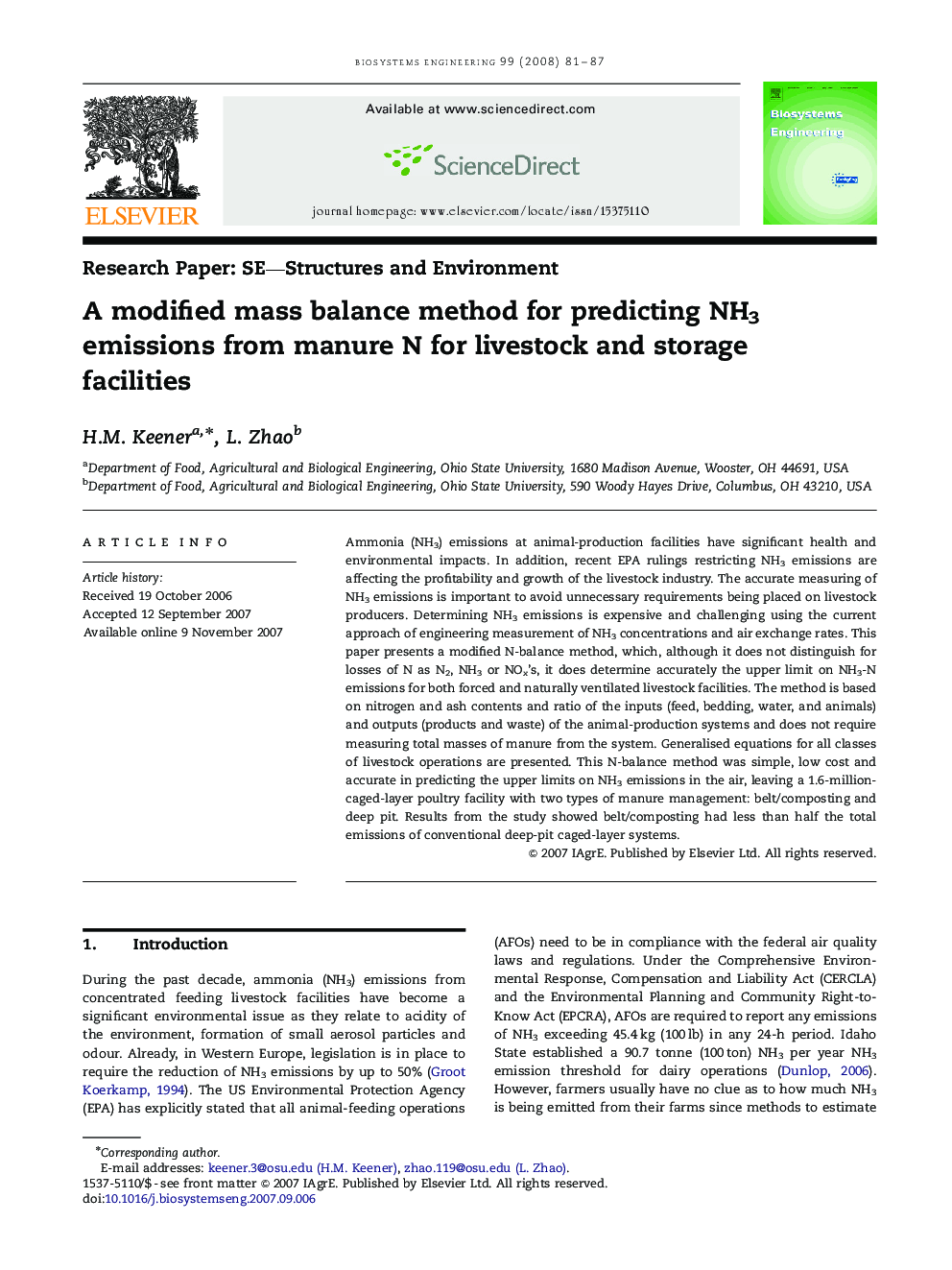| کد مقاله | کد نشریه | سال انتشار | مقاله انگلیسی | نسخه تمام متن |
|---|---|---|---|---|
| 1712501 | 1013142 | 2008 | 7 صفحه PDF | دانلود رایگان |

Ammonia (NH3) emissions at animal-production facilities have significant health and environmental impacts. In addition, recent EPA rulings restricting NH3 emissions are affecting the profitability and growth of the livestock industry. The accurate measuring of NH3 emissions is important to avoid unnecessary requirements being placed on livestock producers. Determining NH3 emissions is expensive and challenging using the current approach of engineering measurement of NH3 concentrations and air exchange rates. This paper presents a modified N-balance method, which, although it does not distinguish for losses of N as N2, NH3 or NOx's, it does determine accurately the upper limit on NH3-N emissions for both forced and naturally ventilated livestock facilities. The method is based on nitrogen and ash contents and ratio of the inputs (feed, bedding, water, and animals) and outputs (products and waste) of the animal-production systems and does not require measuring total masses of manure from the system. Generalised equations for all classes of livestock operations are presented. This N-balance method was simple, low cost and accurate in predicting the upper limits on NH3 emissions in the air, leaving a 1.6-million-caged-layer poultry facility with two types of manure management: belt/composting and deep pit. Results from the study showed belt/composting had less than half the total emissions of conventional deep-pit caged-layer systems.
Journal: Biosystems Engineering - Volume 99, Issue 1, January 2008, Pages 81–87